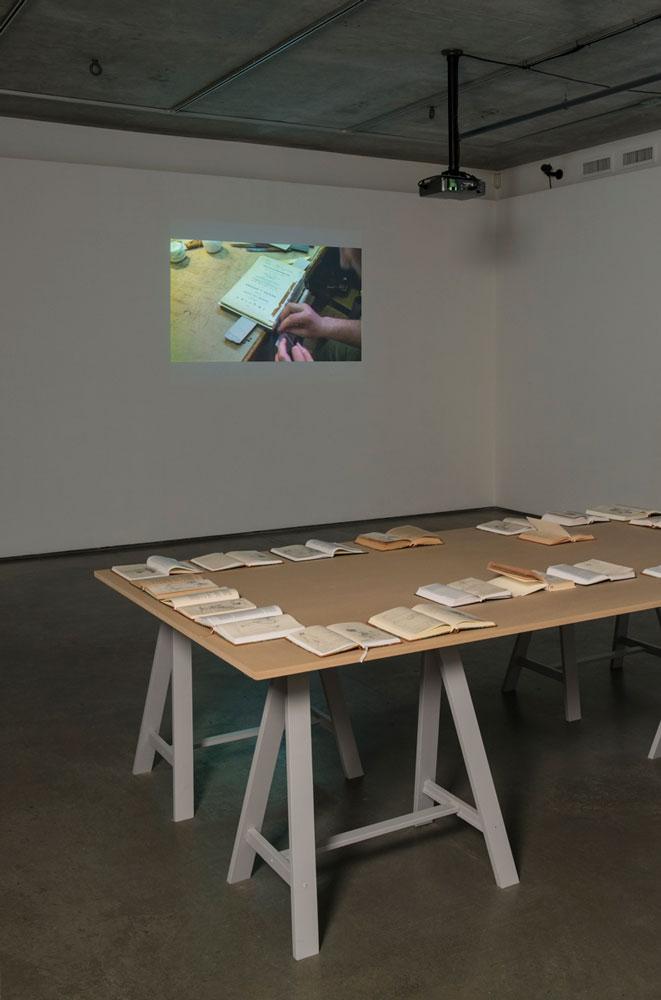On the threshold of Ciprian Mureşan’s first Canadian solo exhibition, “Recycled Playground,” at Vancouver’s Contemporary Art Gallery, one encounters the video Choose (2005). In it, the artist’s son pours Coca-Cola and Pepsi into a glass, then drinks the concoction. The child, like the little whistle-blower in Hans Christian Andersen’s The Emperor’s New Clothes, discerns no difference. The emperor is naked.
Correspondingly, the much-acclaimed Romanian artist here reveals two sides of his nature: he acts as a self-mocking pessimist and as an underground (art) activist. From my perspective, the exhibition can be divided into two parts—but, as in the case of the mixed sodas, the message is more or less the same, and always sprinkled with a pinch of humour.
In another work that shows him as a deft bookbinder, Mureşan pastes his own illustration into a library book. The book is The Wealth of Nations by Adam Smith, and the drawing depicts the ruins of a civilization inhabited by monkeys, as described in an anti-utopian Soviet sci-fi novel. The film that documents the process, The Invisible Hand (2011), refers both to the Smithian self-regulating behaviour of the marketplace and to the artist’s secret plotting.
More similarly “enhanced” books, from Homer to Kafka, are displayed on a table in the gallery. Drawings glued into the volumes are based on another Soviet sci-fi tale, but for me best evoke a new rendition of H.G. Wells’s The War of the Worlds—only in this version, Martians conquer the Earth not by means of violence, but by economic subjugation. Martians or global corporations: who gives a hoot?
In the gallery opposite is Mureşan’s Recycled Playground (2011), where green, yellow and blue trash bins circle a railway track. A film screened nearby presents a puppet sitting on the edge of a waste container who repeatedly declares “I am protesting against myself” in an irritating litany of self-mockery. It is protesting because it is poor, and Romanian, and has children, and is pot-bellied. Finally, the puppeteer, speaking from inside the bin, says, “I am protesting against myself because I am hiding behind a puppet.” The film recalls the feigned self-criticism of Communist Party members.
In another piece, Mureşan reimagines the action in Yves Klein’s photomontage Leap into the Void (1960) a few seconds later, depicting the body smashed on the pavement. However overtly disillusioned, the artist seems to long for unaccomplished utopia.
The lyrical subject of these works, if not Mureşan himself, is a quixotic conspirator. He infests us with doubts about the surrounding reality and the very possibility of free choice. But even while being ingenious and momentarily funny, doesn’t he go to great lengths just to preach to the converted?









